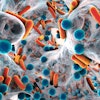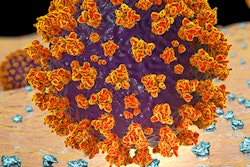
The COVID-19 pandemic has forced dentists to increase their infection control measures, including having patients rinse with antimicrobial agents prior to procedures. With several options recommended, how do dentists choose?
Choosing between chlorhexidine, hydrogen peroxide, povidone-iodine, and other rinses doesn't really matter. Having patients rinse with antiseptic agents for 30 seconds prior to procedures matters most, said Louis DePaola, DDS, the associate dean of clinical affairs and a professor in the department of oncology and diagnostic sciences at the University of Maryland School of Dentistry in Baltimore.
"I think they are all effective," Dr. DePaola said. "I just urge everybody to do a preprocedural rinse."
The pandemic has disrupted the world, leaving behind death, a crushed economy, and many questions about how to contain the novel coronavirus. Dentistry is no stranger to changes in infection control measures, but the virus's airborne transmission has left clinicians rushing to find ways to put patients at ease and keep their staffs and themselves safe. The use of preprocedural rinses has been recommended as a simple way to reduce the viral load in the patient's mouth. However, what dentists should use has been controversial.
Tough choices
Most recently, evidence has shown that a gargle and mouthwash containing 1% povidone-iodine and throat spray containing 0.45% killed 99.99% of SARS-CoV-2 within 30 seconds of contact. The products weren't tested on animals or humans.
Cliff Magneson, education coordinator at National Dental, believes molecular iodine products are the best to use now.
"The new molecular iodine technology kills rhinovirus, a much harder to kill virus than COVID-19, in 30 seconds compared to six to eight minutes for hydrogen peroxide," Magneson said.
"The clear choice would be molecular iodine."
It's a superior choice to chlorhexidine, which kills bacteria but has a limited effect on viruses. Povidone-iodine kills fungi, bacteria, and viruses, Magneson said.
David Rice, DDS, DrBicuspid.com's clinical editor, is using chlorhexidine at his practice. There is no human scientific evidence of a rinse that will help rid patients of SARS-CoV-2, but Dr. Rice said two 30-second back-to-back rinses with chlorhexidine seems to be effective. A small study has shown that chlorhexidine may cut the viral load in saliva.
The ADA recommends that dentists have patients rinse with 1% hydrogen peroxide before they perform procedures. The association did not respond to a request for comment about its recommendation.
It's subjective
Until a comparative study is conducted to compare all of the options, dentists are going to have to choose what's best for them.
Patients have complained about swishing with hydrogen peroxide for 30 seconds.
"It foams up. It feels weird," Dr. DePaola said.
As for povidone-iodine agents, they can be messy.
"If you spill it, it gets on clothes, and makes a mess," Dr. DePaola said.
The patients seen at the university's dentistry school are asked to rinse with the over-the-counter antiseptic mouthwash Listerine, which is made with the essential oils of menthol, thymol, methyl salicylate, and eucalyptol, because it has a strong antimicrobial effect and patients know it, he said.
"I'm not opposed to any of the others, but Listerine is easy to recognize, which makes it patient-friendly," Dr. DePaola said.
The most important takeaway is to have patients rinse, as well as to implement other measures such as increasing air circulation at the practice and using dental dams when possible, he said.
"My advice is to have bulletproof infection control today and have it the same way, every day," Dr. DePaola said.




















